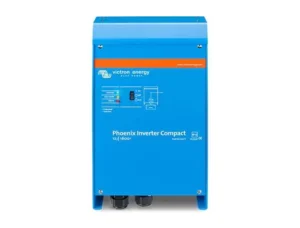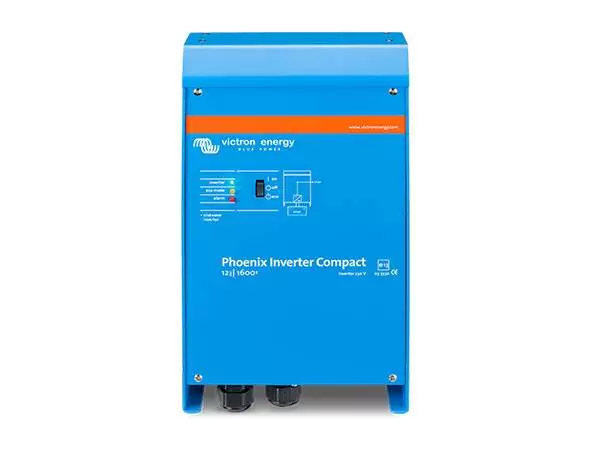As the demand for sustainable energy sources continues to rise, solar power has emerged as a leading choice for homeowners and businesses worldwide. A pivotal component of any solar energy system is a grid-tie inverter. This essential device helps harness solar energy more effectively and efficiently, playing a vital role in the operation and benefits of solar power systems. But what exactly is a grid tie inverter, and why is it so important? This blog post will provide answers to these questions and more.
Understanding What a Grid Tie Inverter Is
At its core, a grid-tie inverter, sometimes referred to as a grid-interactive inverter, is a pivotal piece of equipment within any solar energy system. Its primary function is to transform the direct current (DC) electricity, which solar panels produce, into alternating current (AC). The AC power is then ready for utilization within homes and businesses.
The designation “grid-tie” stems from the inverter’s capability to interface and supply excess power back to the main electrical grid. This ensures that power is available even during times when solar panels might not be generating sufficient electricity due to conditions like inadequate sunlight. It’s worth noting that a grid-tie inverter does not store power but ensures a smooth and continuous transition between solar-generated electricity and grid electricity, optimizing the use of sustainable solar energy.
The Financial Benefits of Using a Grid Tie Inverter
Integrating a grid-tie inverter into your solar energy system can offer substantial economic advantages. One of the most impactful of these is the potential for ‘net metering.’ In essence, this process allows you to send any excess power generated by your solar panels back into the grid, acting as a sort of ‘energy bank.’ The electric company then credits this contribution to your account, effectively reducing your utility bill. This cycle of generating, feeding back, and receiving credits can lead to considerable cost savings over the lifespan of your solar power system.
In addition to net metering, the use of a grid-tie inverter can further promote financial savings by decreasing your reliance on utility companies for electricity. Traditional electricity costs continue to rise due to factors such as increasing demand and diminishing fossil fuel resources. However, by using a grid-tie inverter to harness the power of the sun effectively, you can insulate yourself from these price increases and enjoy more predictable, often lower, energy costs.
In short, the strategic use of a grid-tie inverter in your solar power system can result in not only energy independence but also significant financial benefits. By capitalizing on net metering and reducing dependence on traditional power sources, you can turn your move towards sustainable energy into a financially rewarding decision.
Advantages of a Grid Tie Inverter for the Environment
When it comes to environmental stewardship, the implementation of a grid-tie inverter in your solar power system offers significant benefits. By facilitating the efficient conversion of solar energy into usable power, and then supplying surplus energy back to the grid, these inverters serve as instrumental tools in combating climate change. This reciprocal energy exchange significantly reduces the reliance on fossil fuels, thereby minimizing greenhouse gas emissions that contribute to global warming.
Beyond just the reduction in carbon emissions, the use of a grid-tie inverter supports the broader utilization of renewable energy. Given that solar energy is abundant and inexhaustible, grid-tie inverters enable us to tap into this unlimited resource more effectively. As such, these devices can play a key role in promoting a more sustainable energy future.
Moreover, by enabling homeowners and businesses to participate in energy production through net metering, grid-tie inverters indirectly foster a greater societal consciousness about energy use and its environmental impact. This increased awareness can lead to more responsible energy consumption practices, which can also contribute to environmental conservation.
In essence, grid-tie inverters not only offer an environmentally friendly solution for energy production but also encourage a shift towards more sustainable living and energy consumption habits. Therefore, choosing to integrate a grid-tie inverter in your solar power system is more than just a practical decision; it’s a commitment to a greener and more sustainable future for our planet.
 The Convenience of Using a Grid Tie Inverter
The Convenience of Using a Grid Tie Inverter
The use of a grid-tie inverter brings a level of ease and straightforwardness to the process of utilizing solar energy. A primary benefit is the continuous and uninterrupted power supply it ensures. It does this by seamlessly switching between solar-generated electricity and grid electricity, depending on the availability of solar power. This functionality allows you to enjoy the benefits of solar energy without having to adjust your lifestyle or electricity usage habits.
A particularly appealing aspect of grid-tie inverters is their automatic operation. They require minimal manual intervention. Once installed and set up, they continually and automatically manage the flow of power between the solar panels, the grid, and your home or business. This feature provides a ‘set it and forget it’ convenience that many homeowners and businesses find attractive.
Additionally, most grid-tie inverters come equipped with monitoring capabilities, providing real-time data on the system’s performance. This allows you to easily track the amount of energy generated by your solar panels, the power being consumed, and any surplus being fed back to the grid. This ease of tracking and monitoring adds another layer of convenience to using a grid-tie inverter.
In a nutshell, the use of a grid-tie inverter eliminates the complexity often associated with transitioning to solar power. It ensures an effortless integration of solar energy into your existing power supply, providing an easy and convenient way to embark on your journey towards sustainable living.
Grid Tie Inverters and Energy Independence
One of the standout benefits of using a grid-tie inverter within your solar power system is the ability to gain a level of energy autonomy. By converting solar energy into usable power for your home or business, you can substantially decrease your dependence on traditional power companies. This independence means that you are less susceptible to the unpredictability of fluctuating energy prices and less likely to experience the inconvenience of power blackouts, as you are essentially generating your own electricity.
This self-sufficiency also contributes to a more sustainable lifestyle, as you’re making effective use of an abundant, renewable energy source, rather than relying on finite fossil fuels. So, not only does a grid-tie inverter provide you with reliable, continuous power supply, it also empowers you to take control of your energy production, leading to enhanced security and stability. The energy independence facilitated by grid-tie inverters essentially puts the power back in your hands, providing both practical and symbolic benefits in your journey towards sustainable living.
Considerations When Purchasing a Grid Connected Inverter
When looking to acquire a grid connected inverter, certain factors should be taken into account to ensure optimal performance and compatibility with your solar energy system. First, the efficiency of the inverter is key, as it determines how much solar power is successfully converted into usable electricity. High-efficiency models are generally more desirable as they result in less wasted energy. Secondly, consider the power rating of the inverter. It should match or exceed the total output of your solar panels to effectively manage the power they generate.
Warranty details also warrant close attention. As a critical part of your solar system, you’ll want a product that’s backed by a comprehensive and reliable warranty. This not only gives you peace of mind but can also save you from unexpected repair or replacement costs down the line.
Compatibility with your solar panels is another significant factor. Not all inverters will work with all types of panels, so ensure that your chosen inverter is suitable for your specific setup. It may be helpful to consult with a solar energy expert or the manufacturers themselves for this information.
Lastly, consider future expansions. If you plan to expand your solar power system in the future, opt for an inverter that can handle the increased power output.
Each of these considerations plays a role in the performance and longevity of your grid-tie inverter, and consequently, the overall success of your transition to solar power. Therefore, it’s essential to conduct thorough research and possibly seek expert advice before making your purchase.
Installation and Maintenance of Grid Tie Inverters
The effectiveness and longevity of a grid-tie inverter heavily rely on its correct installation and upkeep. It’s imperative to entrust the installation process to skilled professionals who are well-versed in the local building codes and safety standards. Proper installation not only ensures optimal performance but also prevents potential safety hazards.
Regular maintenance is another crucial aspect to consider. Just as with any other appliance or equipment, a grid-tie inverter needs periodic upkeep to stay in good working condition and to provide you with a reliable, uninterrupted power supply. Maintenance tasks generally involve cleaning to prevent dust and dirt accumulation that could affect performance. It’s also essential to conduct routine inspections for any signs of physical damage or wear that could potentially compromise the inverter’s operation.
Monitoring the inverter’s performance is also a vital part of its upkeep. Most grid-tie inverters come with monitoring features that allow you to track the system’s efficiency in real-time. This can be an invaluable tool in identifying any potential issues early on, thus helping to prevent bigger, more costly problems down the line.
To ensure your grid-tie inverter remains in peak condition and continues to provide you with the benefits of solar energy effectively, prioritizing professional installation and consistent maintenance is key. This will not only help you maximize your investment in solar power but also contribute to a more sustainable and energy-efficient lifestyle.
FAQs
Let’s explore three commonly asked questions about grid-tie inverters.
*Can a grid-tie inverter operate in an off-grid setting?*
No, grid-tie inverters are designed to function with a connection to the electricity grid. They rely on this link to manage the power flow between your solar system and the grid, and they cannot function independently of it.
*What occurs with a grid-tie inverter during a power blackout?*
Grid-tie inverters are designed with safety measures to automatically shut down during grid power outages. This feature, known as ‘anti-islanding,’ is a safety protocol to protect utility workers from electrical shock while repairing the grid.
*Do grid-tie inverters enhance the efficiency of solar panels?*
While grid-tie inverters do not directly increase the efficiency of the solar panels, they play a crucial role in utilizing the electricity generated by these panels effectively. They convert the DC power produced by the panels into AC power for use in your home or business, and manage the excess power feed into the grid. Without a grid-tie inverter, you wouldn’t be able to make full use of the power generated by your solar panels.
Conclusion
In our journey to sustainable living, grid-tie inverters have proven to be an essential companion, bridging the gap between solar power and our daily energy needs. The critical role they play in converting solar-generated DC power to usable AC power, coupled with their capability to ensure a continuous power supply by harmoniously interconnecting with the main grid, is simply unmatched. The financial gains through potential cost savings and net metering, coupled with the energy independence they offer, underscore their practical importance in any solar power system. Additionally, their positive impact on the environment, through the promotion of renewable energy use and reduction of greenhouse gas emissions, further amplifies their appeal.
| Related Business Listings |
| Contact Directory |
| Local Business Profiles |



